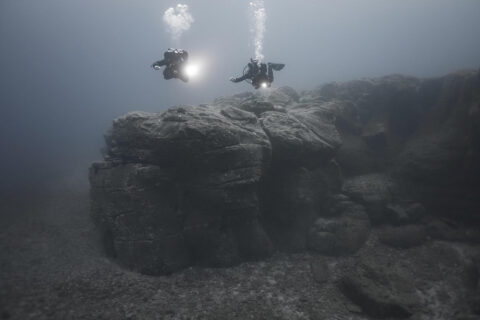Angel shark
The angel shark is a fascinating species of shark that belongs to the family Squatinidae. It is also known as the monkfish or the angel shark, and it is one of the most unique and unusual looking sharks in the world.
Angel sharks are flat-bodied sharks that are perfectly adapted to life on the ocean floor. They have broad, flattened bodies that allow them to blend in with their surroundings and avoid detection by predators. Their body shape also makes them excellent ambush predators, as they can lie completely motionless on the sea floor, waiting for their prey to come close before striking.
Another unique feature of the angel shark is its ability to partially bury itself in the sand or mud, leaving only its eyes and the top of its body exposed. This allows the shark to remain hidden from prey and predators alike, and it also makes it difficult for humans to spot them.
Were do we spot Angel sharks
Angel sharks are generally found in shallow, sandy areas in temperate and tropical waters around the world. They are most commonly found in the western Atlantic Ocean like the Canary islands, but they can also be found in the Mediterranean Sea and eastern Pacific Ocean.
In the winter period, the angel shark is a common sighting while diving in Tenerife.
Conservation efforts
Despite their relatively harmless nature, angel sharks have been hunted extensively for their meat, oil, and fins. This has led to a significant decline in their populations, and they are now considered endangered in many areas.
Conservation efforts are currently underway to protect the angelshark and ensure that its populations recover. These efforts include restrictions on fishing, habitat conservation, and education programs aimed at raising awareness about the importance of these unique and valuable creatures.
In conclusion
The angel shark is a fascinating species of shark that has adapted to life on the ocean floor in remarkable ways. Its unique body shape and behavior make it a truly remarkable creature, but it is also under threat due to human activities. It is up to us to take action to protect these incredible animals and ensure that they can continue to thrive in our oceans for generations to come.












Leave a comment
You must be logged in to post a comment.